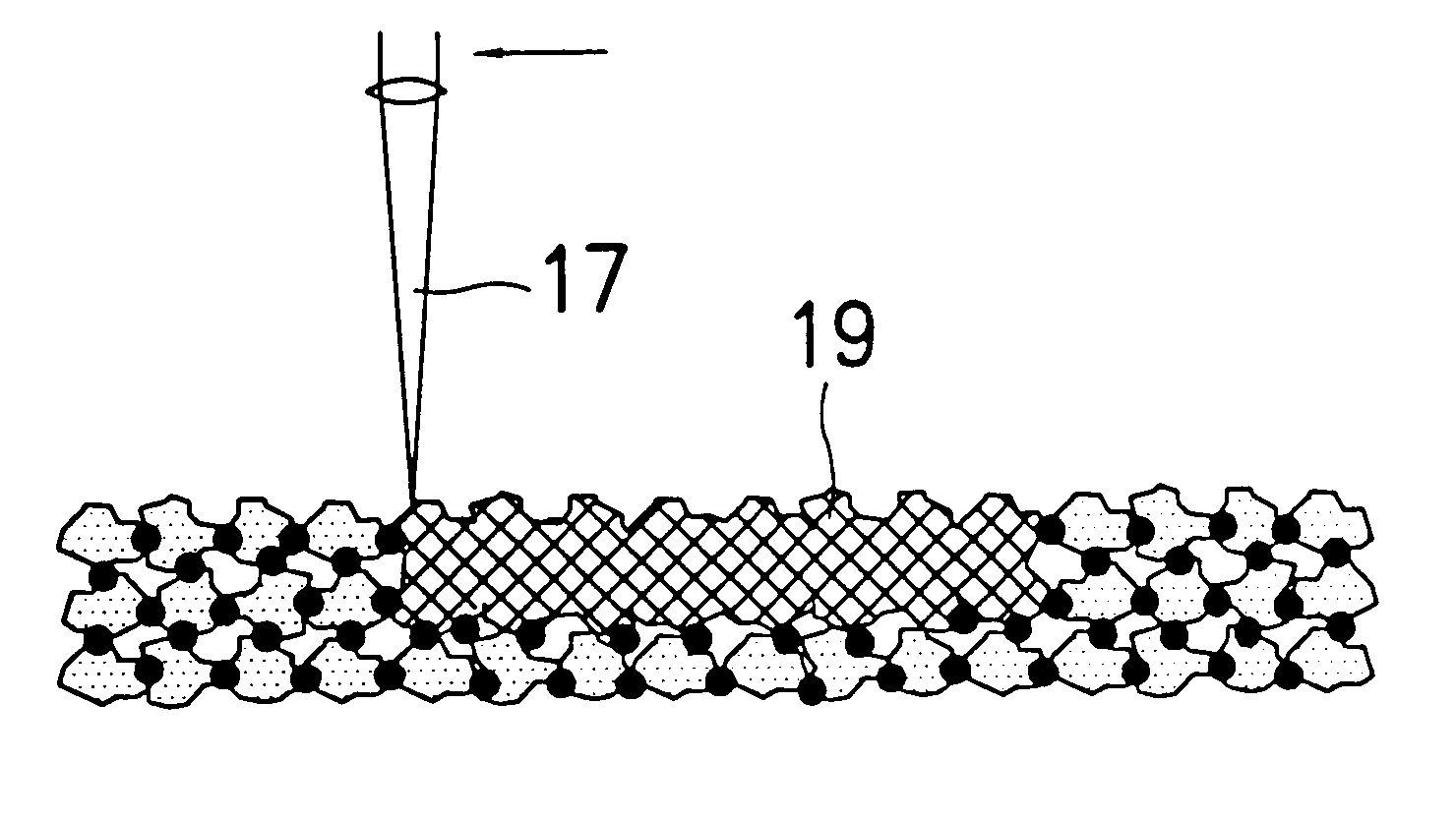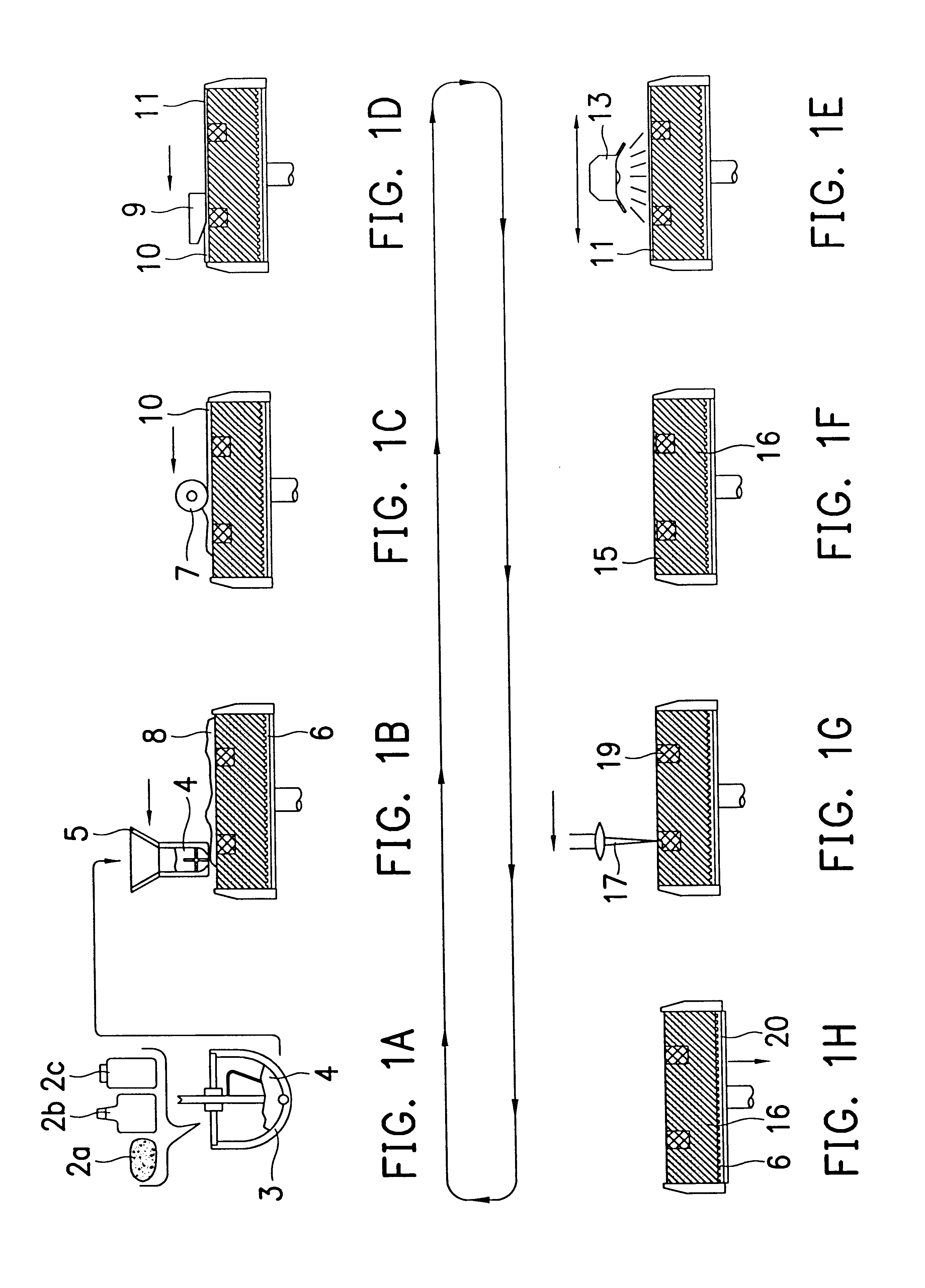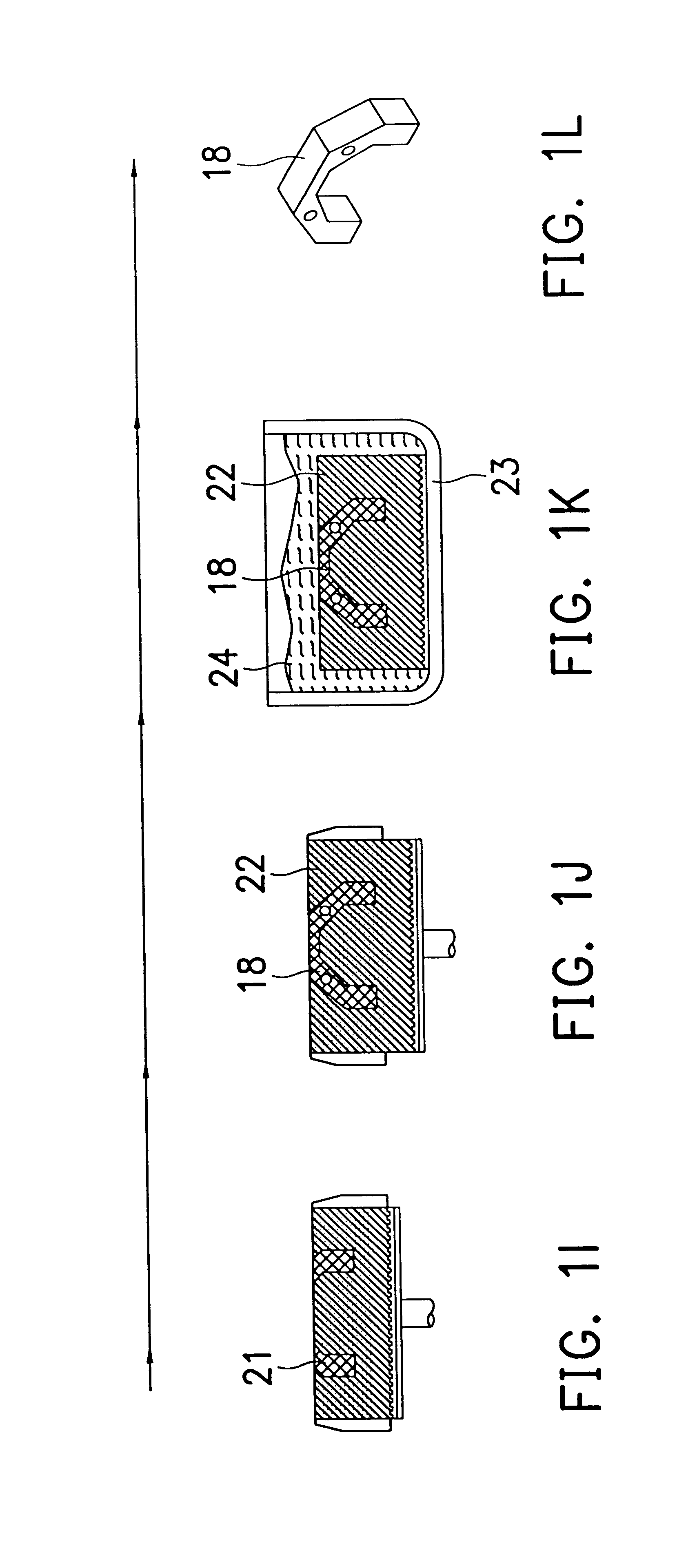Method for rapid forming of a ceramic work piece
a technology of ceramic workpieces and forming methods, applied in the direction of additive manufacturing processes, manufacturing tools, electric/magnetic/electromagnetic heating, etc., can solve the problems of ceramic workpiece cracking, long processing time, and short amount of time required for each laser ceramic sintering cycle involving both heating and cooling
- Summary
- Abstract
- Description
- Claims
- Application Information
AI Technical Summary
Benefits of technology
Problems solved by technology
Method used
Image
Examples
process embodiment
The above has described technologies and equipment's related to each step of the ceramic fabricating process according to the present invention. For further understanding of the present invention, a more detailed description of the method embodiment for rapid ceramic workpiece fabrication according to the present invention is herein provided with the illustrations of FIG. 1A to FIG. 1L.
FIG. 1A, which is equivalent to Step (a), shows the step to prepare the plastic green mixture starting with composing material. The ceramic powder 2a, inorganic binder 2b, and dissolving agent 2c are all placed inside a mixing device 3 with suitable proportions to be mixed thoroughly, then the mixed composition materials, plastic green mixture 4, are unloaded to the feeding container 5.
FIG. 1B to FIG. 1F illustrate the steps for forming a thin layer of the plastic green mixture as described in Step (b). A feeding device feeds the plastic green mixture 4 onto the top surface of the worktable 6 as shown...
PUM
| Property | Measurement | Unit |
|---|---|---|
| particle size | aaaaa | aaaaa |
| temperature | aaaaa | aaaaa |
| water content | aaaaa | aaaaa |
Abstract
Description
Claims
Application Information
 Login to View More
Login to View More - R&D
- Intellectual Property
- Life Sciences
- Materials
- Tech Scout
- Unparalleled Data Quality
- Higher Quality Content
- 60% Fewer Hallucinations
Browse by: Latest US Patents, China's latest patents, Technical Efficacy Thesaurus, Application Domain, Technology Topic, Popular Technical Reports.
© 2025 PatSnap. All rights reserved.Legal|Privacy policy|Modern Slavery Act Transparency Statement|Sitemap|About US| Contact US: help@patsnap.com



